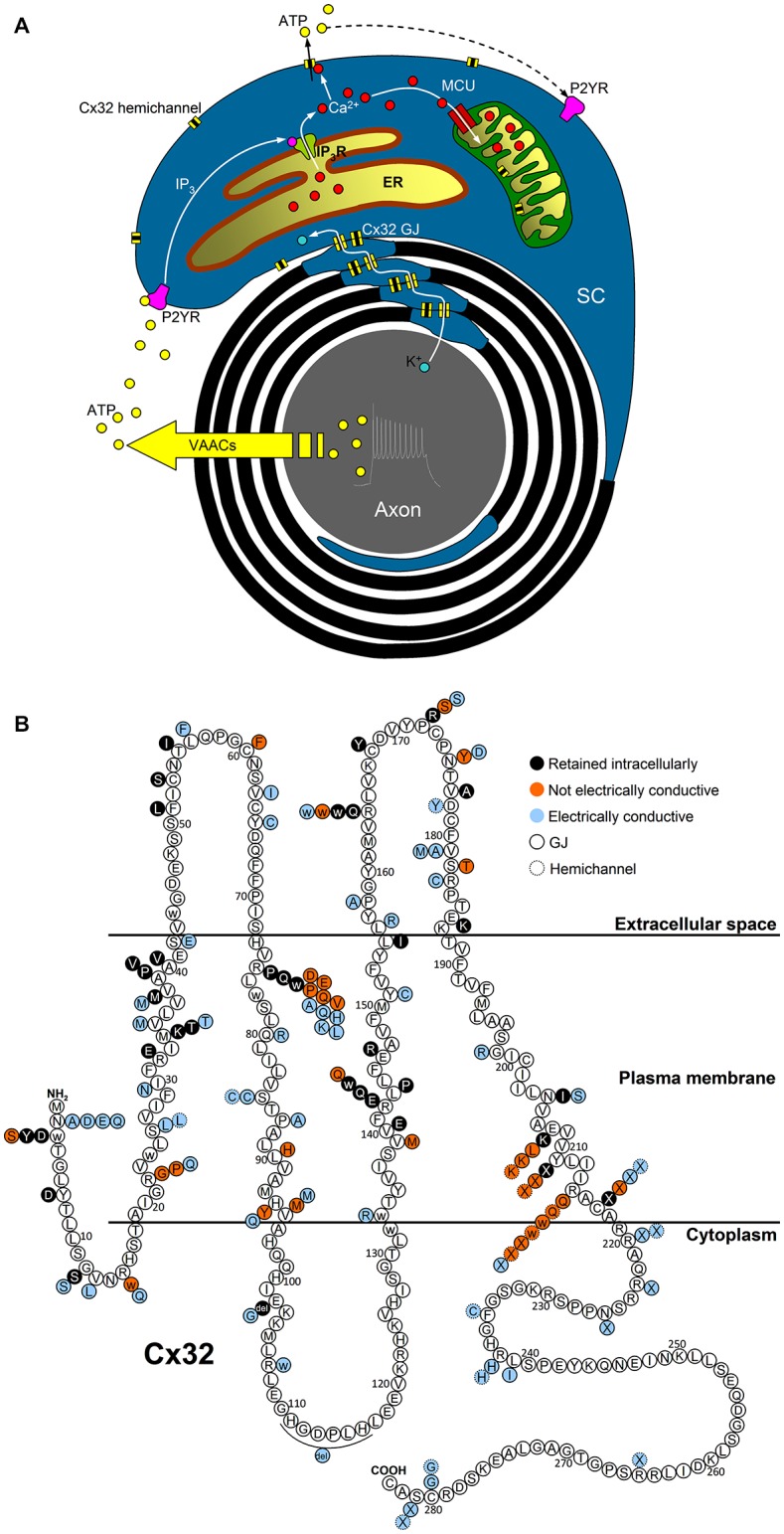Figure 1.

Possible functions of Cx32 in myelinating SCs and topology of Cx32 mutations. (A) Electrical activity of myelinated nerves triggers axonal K+ release, whose recycling could involve Cx32 GJs located in SC paranodes and Schmidt–Lanterman incisures. Axonal firing also stimulates ATP release from volume-activated anion channels (VAACs; Fields and Ni, 2010) which induces P2Y-mediated Ca2+ increases in the cytosol and the mitochondrial matrix of the surrounding SCs via IP3 receptors (IP3R) of the endoplasmic reticulum (ER) and the mitochondrial calcium uniporter (MCU), respectively. The increase in the cytosolic Ca2+ concentration ([Ca2+]i) should be sufficient to trigger Cx32 hemichannel opening and ATP release, contributing to the intracellular and intercellular propagation of the Ca2+ signal. Interaction between Cx32 hemichannels and mitochondria may play a role in cell bioenergetics as found in liver of Cx32-null mice (Fowler et al., 2013). (B) Cx32 mutations belonging to classes 3-4-5 mentioned in the text are represented as colored circles (black-red-azure, respectively) associated to the correspondent WT amino acid (white circle), where the topology of Cx32 domains is derived from the all-atom model of Cx32 connexon in Carrer et al. (2018).
